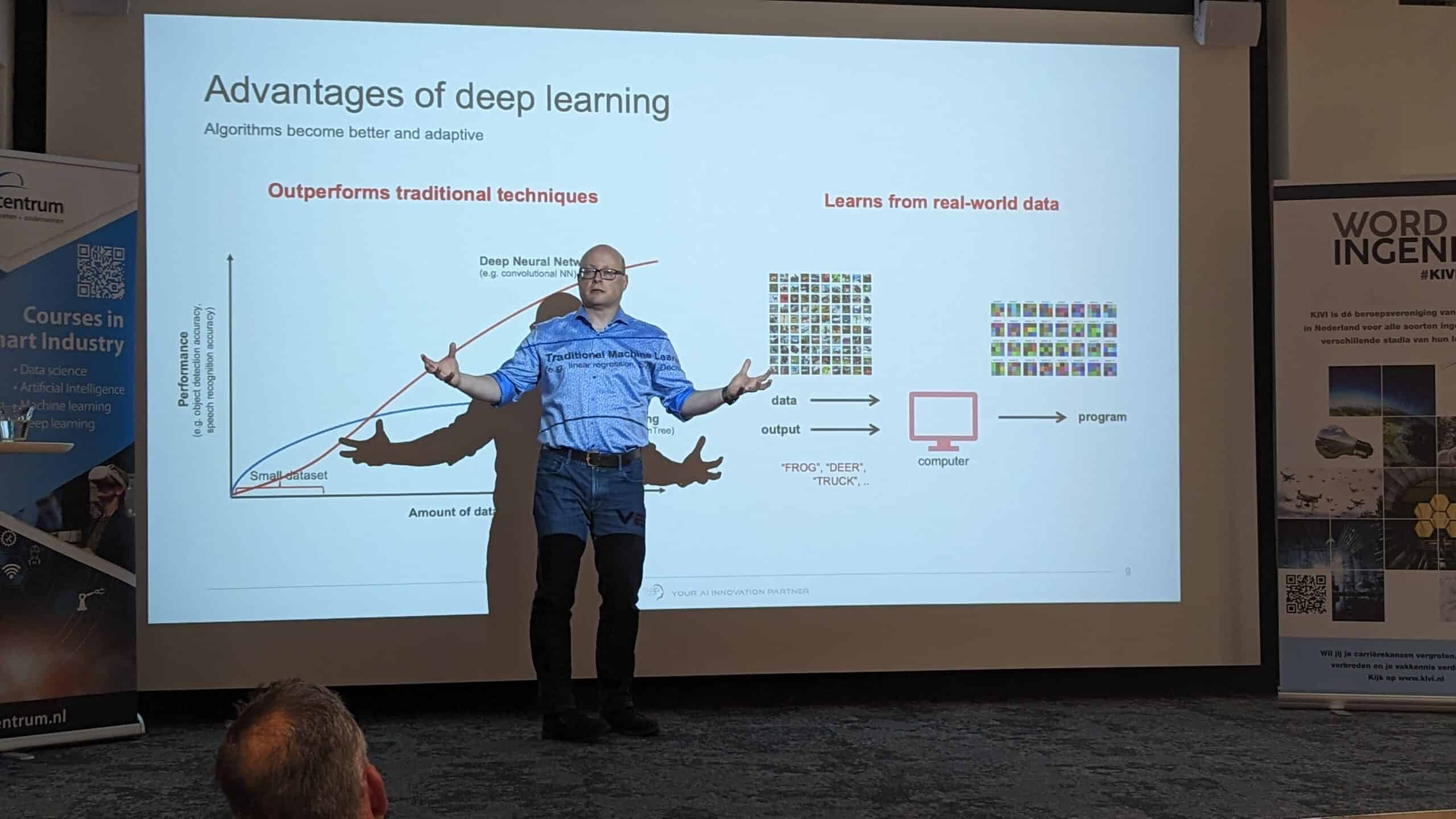
Kivi‘s algorithm is plain and simple: every second Friday of the month, together with Mikrocentrum, they invite a lecturer in the field of engineering for a talk about their field of expertise, followed by an opportunity to meet other engineers. Today, the floor in the AI Innovation Center at High tech Campus Eindhoven was for Albert van Breemen, CEO and CTO of VBTI, an AI engineering company that develops Deep Learning solutions for companies in agriculture and manufacturing. Van Breemen, whose company recently won a Gerard & Anton Award, guided his audience through the hidden tracks of Artificial Intelligence and deep learning.
VBTI has successfully applied deep learning technology to agricultural robots and harvest forecasting systems. This required the development of a dedicated platform to get deep learning operational: AutoDL. The platform has automated many of the lifecycle tasks of deep learning development; with the support of VDL, VBTI is now taking the technology to a new level.

His work is all about “making automation intelligent”, Van Breemen says at the start of his lecture. “We want to help industries like agriculture, manufacturing, logistics, and robotics in their transformation processes, using deep learning and computer vision.” But first, what is deep learning?
Van Breemen presents a timeline showing three significant periods. “Not many people are aware of it, but artificial intelligence was already mastered in the 1950s, by creating machines that could sense, reason, act, and adapt. In the 1980s, we had the second wave called Machine Learning. It was the age of the algorithms that used data to improve their performance. Neural networks were created. Only after 2005 can we speak of Deep Learning: we started training deep neural networks with big data.”
Big data is crucial for this: the more data, the more deep learning options. But it’s not like humans are out of work because of this development, Van Breemen says. “Most importantly, we need people to collect and select the data and annotate all this so the machine can actually learn from it. After these processes, the model training can start, and finally, it’s time for deployment.”
Leaf-cutting robot
Deep learning consumer successes can be found in autonomous driving, GO and chess achievements in GO and chess, or smart assistants like Siri or Alexa. “And now, it’s time for the industrial domain to get into deep learning.” VBTI/VDL is doing this by using AI to develop a cucumber leaf-cutting robot. “That’s a really complex world because not one cucumber leaf or stem is the same, and still, the machine needs to recognize them exactly. All those variations make it difficult, the deep learning toolbox can make this process robust.”
Van Breemen and his team have been working for years on the technology to support de de-leafing robot. “Getting 80 percent accuracy is easy, but the last 20 percent is extremely difficult. You always wonder which – and how much – data should be collected and annotated, how you handle storage and versioning, and how you can tell what the quality of the data is.” Van Breemen says he is happy and proud about the result, leading to an effective robot, but he also knows that this can never be the end of it. “You never stop learning. You keep collecting new data – more data is more deep learning capacity.”

